Israel's Dead Sea is known for its extreme levels of salinity. Its name comes from the fact that the water is so salty, there's barely any aquatic life there.
However, it's been a popular health resort and tourist destination since Roman times, and to this day, it is a must-see for those traveling in Israel.
The Dead Sea is mainly known for the health and beauty-aiding properties of its mineral-rich salt. Just like the now-popular Himalayan pink salt, people have sworn by Dead Sea salt as a cure for all kinds of ailments. But it's not usually associated with art.
And that's where artist Sigalit Landau comes in.
The Israeli artist grew up looking at the Dead Sea from her childhood home, and it's become a major theme in many of her artistic works. "It's like meeting a different time system, a different logic, another planet," she says of the salty waters.
While her artwork takes many different forms, one of her favorite things to do is to turn everyday objects like clothing, shoes, and cloth into sparkling and mysterious sculptures by submerging them in the Dead Sea and letting them become completely encrusted with salt crystals.
One such project is Salt Bride, which uses a replica of a 1910 gown that was left in the Dead Sea for three months, gradually acquiring a thick coating of salt crystals, turning the black fabric into white mineral.
Check it out below, and see how beautiful salt can really be!
[H/T: BoredPanda, My Modern Met]
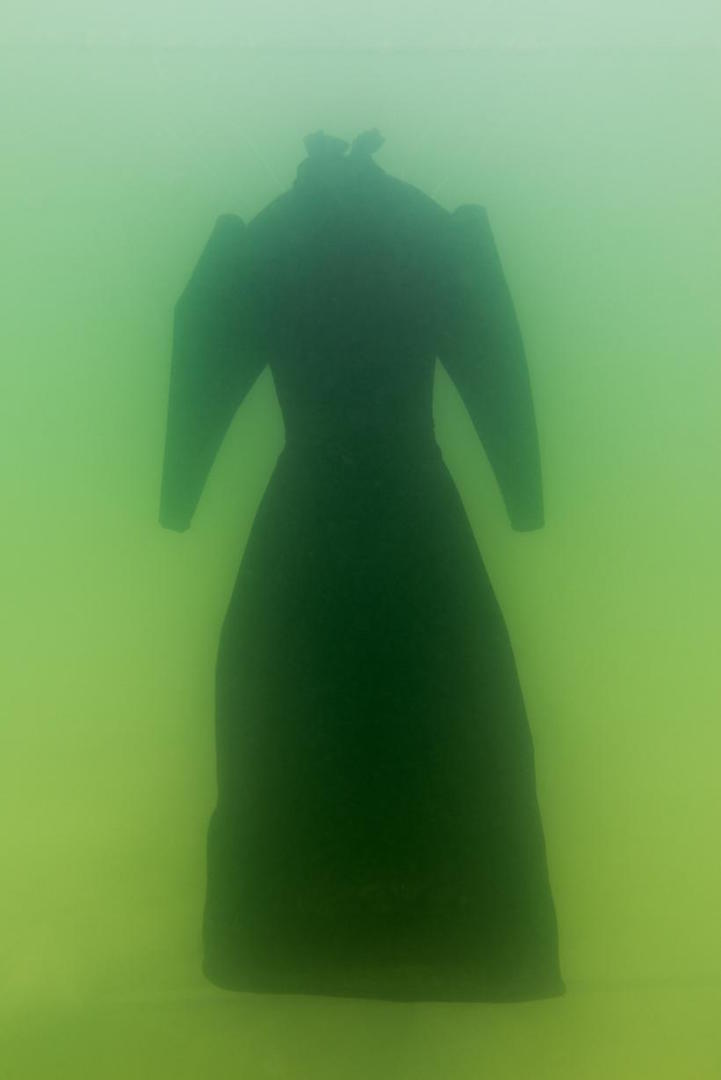
Artist Sigalit Landau submerged this dress in the Dead Sea for three months back in 2014, returning periodically to document its transformation from a black fabric dress to a white crystal sculpture.
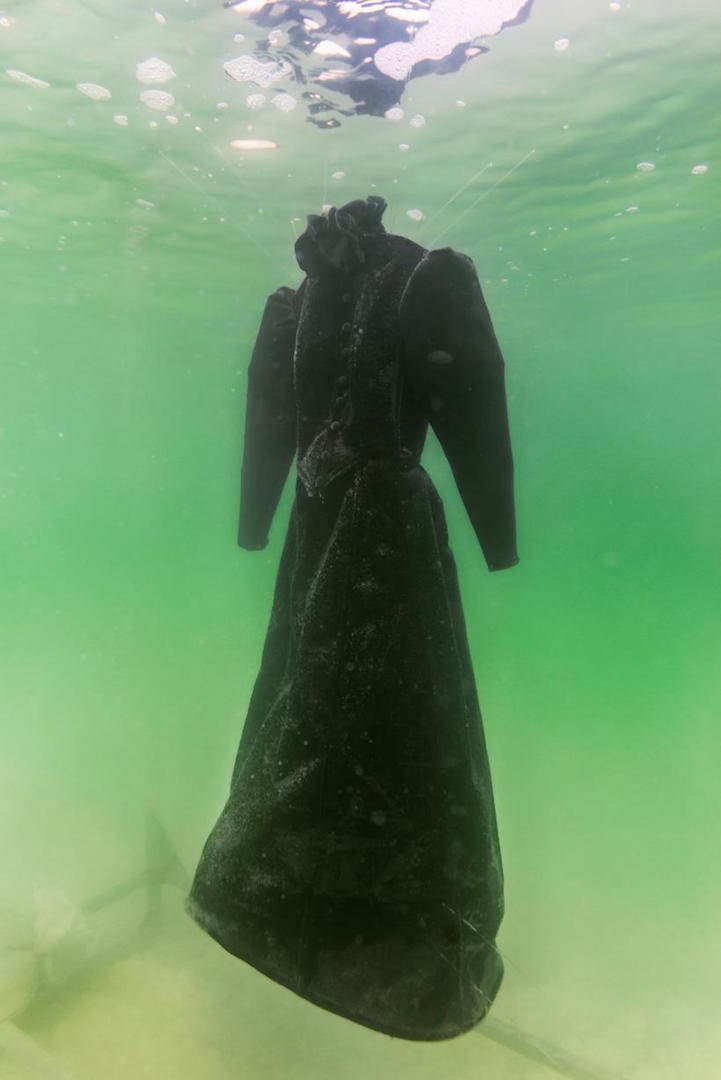
Landau grew up in a house overlooking the Dead Sea, so it's become a central part of her artwork, as well as of her memories and identity.
She's also always been fascinated by the salt and how the crystals can transform everyday items into haunting, otherworldly sculptures.
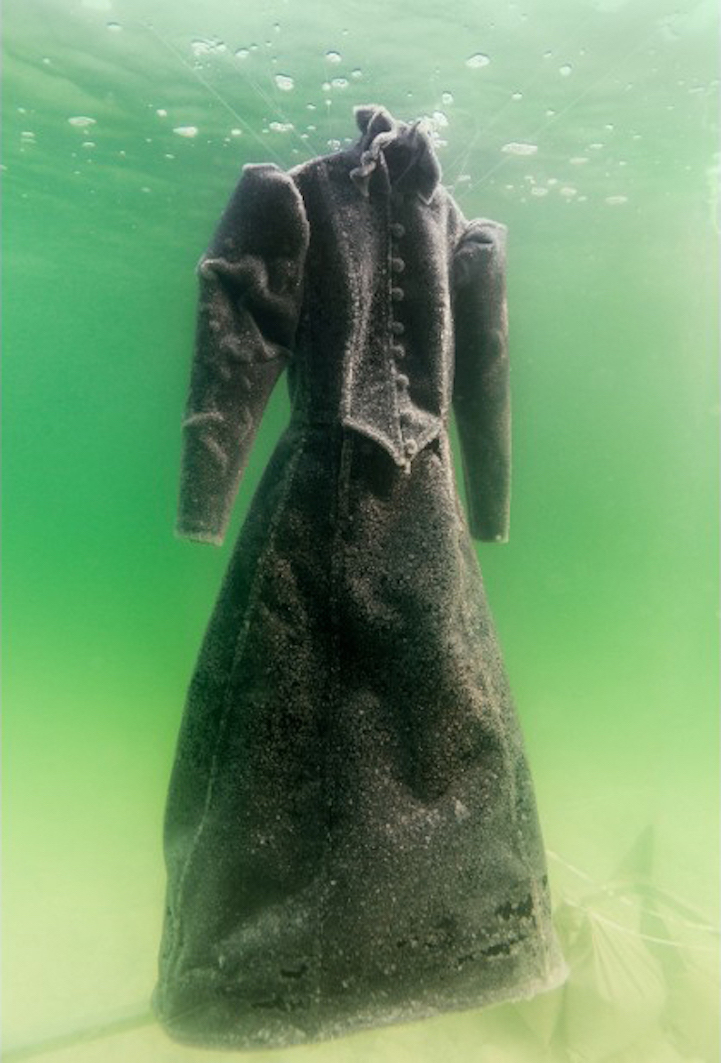
This piece, Salt Bride, was inspired by a 1916 play by S. Ansky called The Dybbuk.
In the play, a young Hasidic woman becomes possessed by the spirit of a deceased lover, and is full of romance and the supernatural.
The dress is a replica of one used in a performance of the play back in the 1920s.

Landau would return several times to the spot where the dress was submerged to see how the salt crystals were developing.
In this series of photos, you can see how they're overtaking the dress and turning the black fabric white.
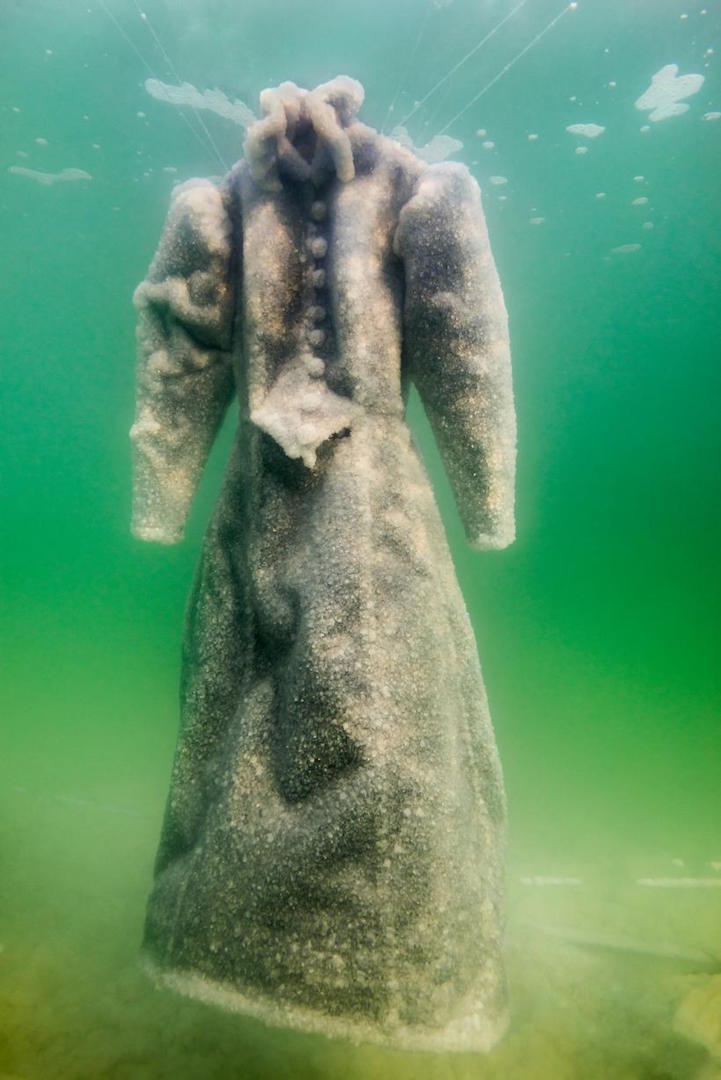
In relation to The Dybbuk, Landau says it's the study of a transformation, of an ordinary thing becoming strange and alien.
But while the salt of the Dead Sea is said to heal ailments, the transformation in the play is more sinister, so the viewer is left to decide which transformation we're watching.

The transformation of the dress feels magical, like watching a sculpture emerge out of nothing right before your eyes.
Of course, the formation of salt crystals on an object is a totally natural process, but it's still fascinating.
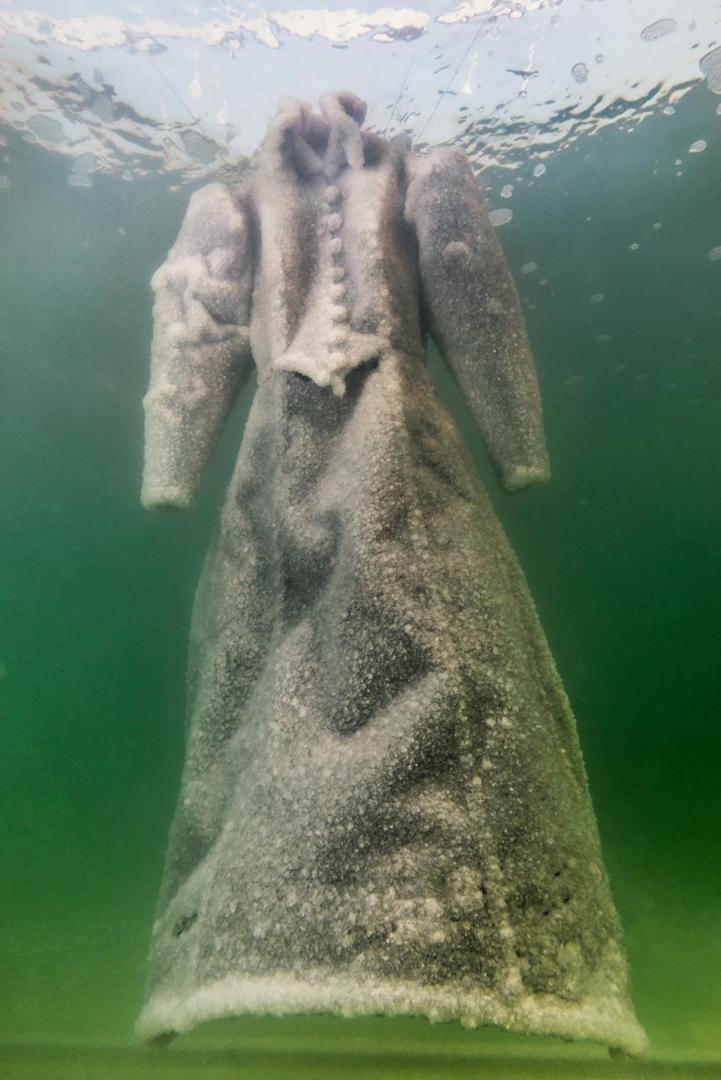
The dress goes from black to completely white, almost like a wedding gown. A wedding also features into the play.

Eventually, the dress was lifted out of the water, fully encased in salt crystals.
It looks like it was carved from stone now, but really, it was built by the the natural processes of salt and water.
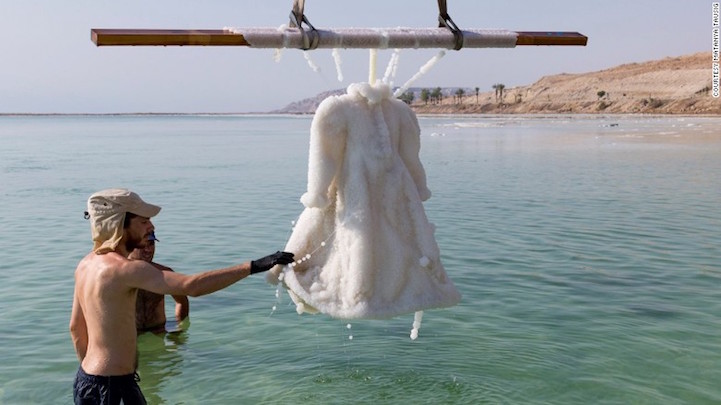
You can also see the salt on the wooden support and wires that held the dress in place underwater. The skirt of the dress is frozen into position, and the once-soft fabric has become rigid and hard.
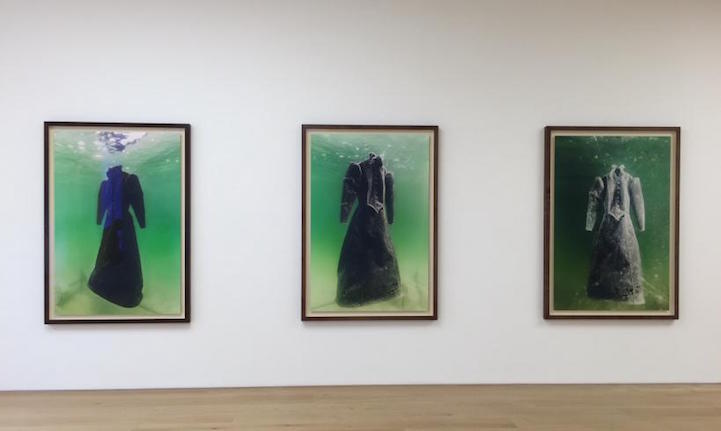
Photos of the dress' transformation underwater are currently on display in London.
What does this art piece say to you? Let us know your impressions in the comments, and SHARE this unique way of making a sculpture with your friends!




